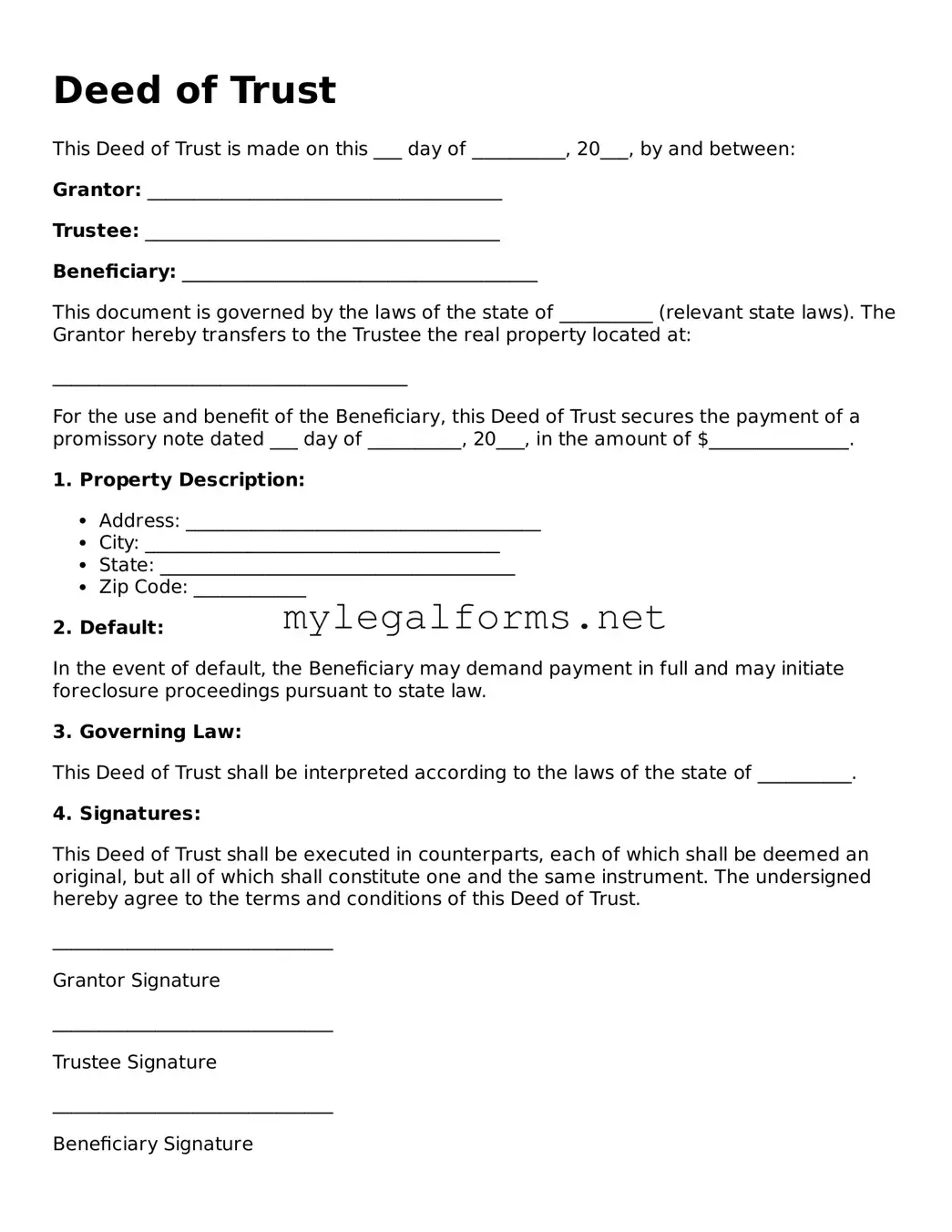Deed of Trust
This Deed of Trust is made on this ___ day of __________, 20___, by and between:
Grantor: ______________________________________
Trustee: ______________________________________
Beneficiary: ______________________________________
This document is governed by the laws of the state of __________ (relevant state laws). The Grantor hereby transfers to the Trustee the real property located at:
______________________________________
For the use and benefit of the Beneficiary, this Deed of Trust secures the payment of a promissory note dated ___ day of __________, 20___, in the amount of $_______________.
1. Property Description:
- Address: ______________________________________
- City: ______________________________________
- State: ______________________________________
- Zip Code: ____________
2. Default:
In the event of default, the Beneficiary may demand payment in full and may initiate foreclosure proceedings pursuant to state law.
3. Governing Law:
This Deed of Trust shall be interpreted according to the laws of the state of __________.
4. Signatures:
This Deed of Trust shall be executed in counterparts, each of which shall be deemed an original, but all of which shall constitute one and the same instrument. The undersigned hereby agree to the terms and conditions of this Deed of Trust.
______________________________
Grantor Signature
______________________________
Trustee Signature
______________________________
Beneficiary Signature
Witnessed by:
______________________________
Witness Signature
Date: ________________
